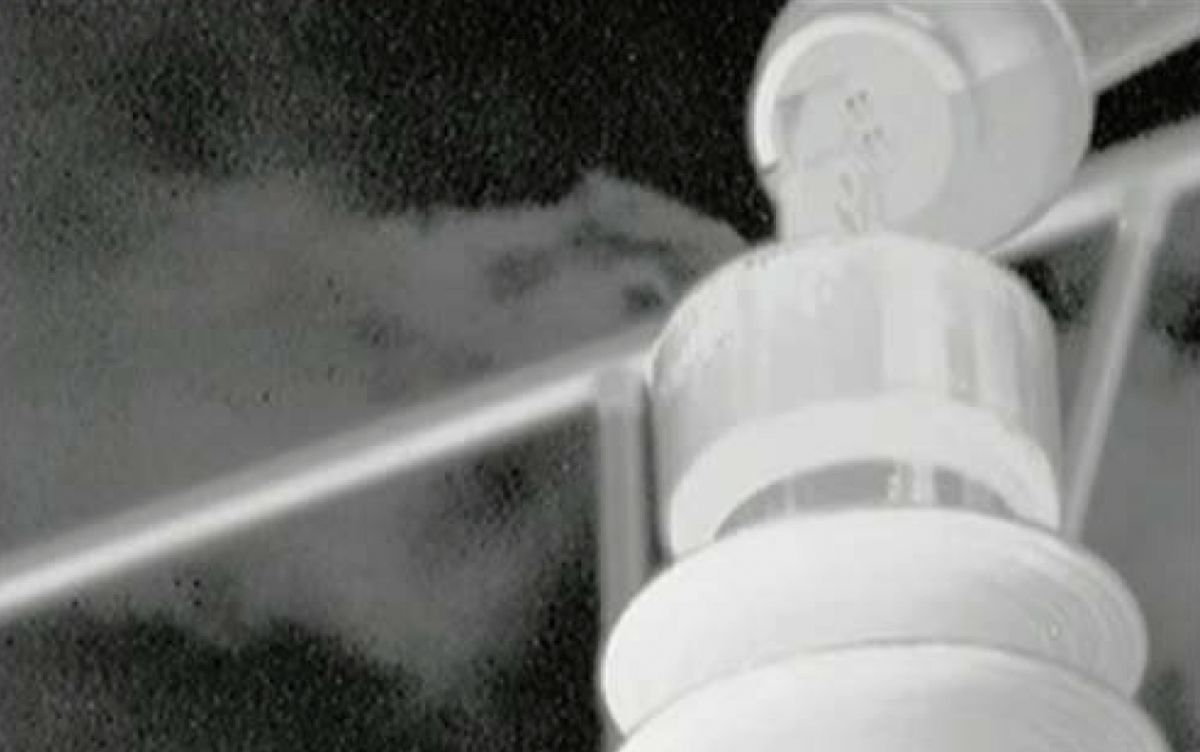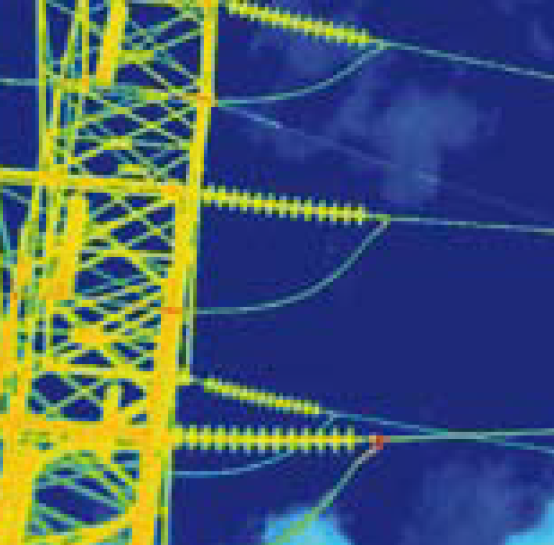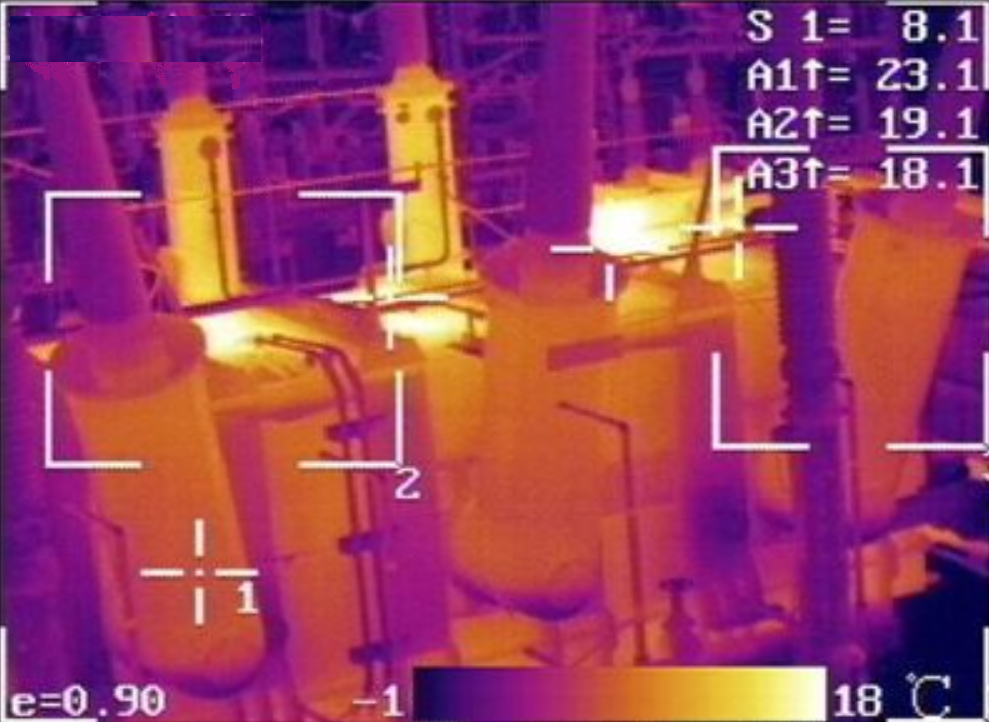Gas detection camera. Uses and applications.
In this article, we explain in which industries the Amperis gas detection cameras are most widely used, their applications and what gases they are capable of detecting.
The gas detection camera is suitable for:
- Production and distribution of electrical energy: This equipment is used for the detection of leaks in the distribution of high voltage, since the electrical energy uses sulfur hexafluoride (SF6) as an insulating gas inside the electrical substations. These cameras are extremely sensitive to SF6.
- Oil refining: in a refinery we find two types of process: separation and conversion. The camera has an excellent response to detect most products derived from refinery processes.
- Petrochemical: Most chemical products manufactured in the petrochemical industry have good visibility using the Amperis gas detection chamber.
- Chemical: The gas detection chamber allows you to see chemical products found in this sector, whether they are hydrocarbons or inorganic chemical products.
- Natural Gas: Natural gas is composed mainly of methane and ethane, both detectable by the camera. It is used for the detection of leaks in the production, storage, transportation or distribution of gas.
- Service providers: subcontracted companies offering leak detection and repair or regulatory agencies, government agencies, which must monitor the industry ensuring compliance with the law in order to reduce emissions to the atmosphere.

Ventilation pipes in a petrochemical plant
Applications
- SF6 detection
The main market of the gas detection chamber is the electrical distribution industry and specifically the detection of sulfur hexafluoride (SF6). SF6 is widely used in the electrical distribution industry as an insulating gas in high-voltage switchgear and transformers. It is a gas with a "global warming potential" (GWP) of 23,900 and an atmospheric life of 3,200 years.
To put this in perspective a company that buys 1 ton per year of SF6 as a recharge gas is releasing 1 ton per year of this gas through leaks, the equivalent of 23,900 tons of CO2. To produce this amount of carbon dioxide, a vehicle should drive 239 million km.
This is why it is essential for an electricity company to reduce its emissions of SF6 to the atmosphere, by locating leaks, thanks to the gas detection chamber, and repairing them.
The leak paths found in electrical distribution equipment are less than in the process industries and therefore more locatable through the camera (flanges, bushings, rupture discs, valve stems). Leaks may be due to:
- poor installation
- disturbance during planned maintenance
- failure in sealing due to the passage of time.
The Amperis gas detection camera has proven to be highly effective in both indoor and outdoor substations, even for very small leak rates and low thermal contrasts between the leak and the bottom (the chamber detects leaks as small as 0.25 kg / year ), providing access to all possible escape routes even when the equipment is energized.
- Location of leaks
The most widespread and demanded application of gas detection cameras is the detection of gas leaks in industry, the most common points are: Flanges, valves, plugs and caps, machinery, couplings, pump seals, holes, step of valves, drain covers or instrument connections.
Keep in mind that in an industry or a process plant there are many possible escape routes, so the use of the Amperis Gas Detection Chamber allows the user to examine many potential sources of leakage in a short time and from the distance
- Corrosion under insulation
Occasionally leaks can appear in the most unexpected places, for example in a thermally isolated part, where the sealing of the coating has suffered corrosion and leads to filtration and the appearance of a leak, detectable with the camera at a considerable distance.
- Improving plant start-up safety
Most of the industrial installations have some hard requirements with the objective of reducing the emission of compounds to the atmosphere, where the gas detection camera plays a fundamental role. But also the detection of leaks during the start-up of the process plants, or in equipment that was previously leak-free, components that have been altered due to maintenance activity may also have leaks, etc.
Leaks in process equipment, no matter how small, are potential damage to the environment and considerable losses for companies. That is why it is essential to inspect the process plant frequently to detect these leaks, eliminate them and maximize the benefits of the owner.
- Incorrect location
It is derived from an erroneous measurement of the leak through another system. However, using the gas detection camera, it is shown that the source of the leak is in a different location (which can prevent the company, for example, from partially shutting down the facilities with the economic loss that entails). The camera shows the leakage pen in real time and allows it to be traced back to its true origin.
- Chemical and petrochemical industries
The applications for the infrared long-wave gas detection camera in these industries are the protection of personnel and the environment (toxic gas), the reduction of lost product and the elimination of potentially flammable leaks.
- Refrigerant gases
The long wave camera is also ideal for detecting refrigerant gases in the manufacturing and maintenance stage of domestic use and commercial refrigeration and automotive air conditioning, providing an improvement in the production of harmful gases to the atmosphere.
- Regulación
Worldwide there has been an increase in equipment in substations filled with SF6 gas and governments are increasingly aware of the risk to the environment posed by this situation. That is why governments are imposing the reduction in the release of SF6 by means of fines and rewards or tax exemptions for the reduction of gas losses. In addition, the cost of SF6 is also increasing, which increases the financial motivation to eliminate leaks.
The laws and external audits are promoting the acquisition of this type of cameras to monitor, inform and reduce the emissions of companies, since it is cheaper for these to assume the acquisition of a gas detection chamber, not a fine or sanction. In the USA, the Environmental Protection Agency requires to follow the leak detection and repair program. In the European Union the use of the infrared camera is spreading as an alternative to the conventional method
Spectral response and detectable gases
The short wave leak detection chamber (3-5 μm) is very sensitive to the gases that can be found in the industry, it can detect many gases but has been tested in the laboratory with 19 which are: Benzene, Butane, Ethane, Ethylbenzene, Ethylene, Heptane, Hexane, Isoprene, MEK, Methane, Methanol, MIBK, Octane, Pentane, 1-pentane, Propane, Propylene, Toluene and Xylene.
The long wave gas detection chamber (detector response of 10-11 μm) is very sensitive to sulfur hexafluoride (SF6). The chamber can detect many gases but has been tested in laboratory with 8 which are: Sulfur hexafluoride, Anhydrous ammonia, Ethyl cyanoacrylate ('Superglue'), Chlorine dioxide, Acetic acid, FREON-12, Ethylene and Methyl ethyl ketone ( MEK).
In addition to the gases tested in the laboratory, these 18 additional gases are also detectable by the chamber: Acetyl Chloride, Allyl Bromide, Allyl Chloride, Allyl Fluoride, Bromomethane, FREON-11, Furan, Hydrazine, Methylsilane, Methyl Vinyl Ketone , Propenal, Propene, Tetrahydrofuran, Trichlorethylene, Uranium Fluoride, Vinyl Chloride, Vinyl Cyanide and Vinyl Ether.

SF6 leakage from a high voltage isolator
Conclusions
The gas detection camera has a wide range of potential uses in industry and electrical distribution, all of which have positive benefits for the plant owner. It is a work practice to the conventional method of leak detection and has clear benefits of time and cost over conventional VOC or sniffer method. Although limited to some extent by environmental conditions, the Amperis camera can identify leaks at a great distance, which gives access to all possible escape routes.

Más información:
info@amperis.com
(+34) 982 20 99 20
https://www.amperis.com/en/products/infrared-cameras/
